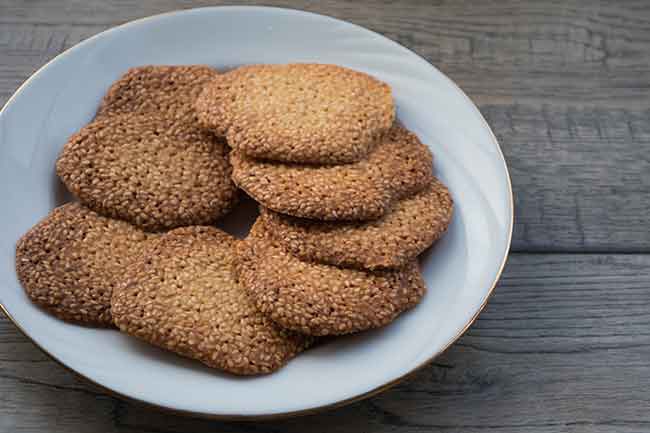
The Final Proof: April 2016
March 21, 2016
By Jane Dummer RD
Small but mighty – Seeds are a versatile and nutritious ingredient that more and more consumers are turning to.
 Sesame seeds added crunch and nutrition to these cookies. Photo: Fotolia
Sesame seeds added crunch and nutrition to these cookies. Photo: FotoliaDid you know that nine out of every 10 bites of food we eat today start with a seed? Seeds are important in our food ecosystem and are packed with essential nutrients like protein, fibre, vitamins, minerals and essential fatty acids. And suddenly, seeds are everywhere – in beverages, bars, crackers, breads, cereals, yogurt – you name it. In my book, The Need for Seeds, available via Amazon, I address how to make seeds an everyday food for your healthy diet, based on the platform of adding more plant-based foods and ingredients to your meals and snacks.
Eating seeds may be new to some of us, but interestingly, some seeds, such as chia, are ancient foods that were consumed by the Aztecs. Sesame seeds may seem almost invisible, but they carry a big nutritional impact. They have been used as an ingredient in many Middle Eastern diets for years and North Americans have been eating them on bagels and hamburger buns for decades! A fun question I often get: “Can a person get high from eating hemp seed?” The answer is, “No.” It’s not possible due to its low delta-9 tetrahydrocannabinol (THC) content.
Seeds are a perfect ingredient for the baking industry. In addition to providing nutrition, crunch and texture, they are gluten-free and nut-free. Recently, when I was a guest speaker at an event, an artisan baker in the audience described how she was experimenting with a pie crust made out of milled pumpkin seeds. In addition to taste, one of the many reasons she selected pumpkin seeds was due to her son having multiple food allergies.
“Seeds are becoming more mainstream, especially for people who require nut-free,” says Kathy Wilson, manger of regulatory affairs at Dare Foods. “At Dare we have been using seeds for quite a long time as we have a nut-free environment. Seeds add crunch, a visual differentiation and of course nutrition to our product lines. Our Grissol line has always had sesame seeds. The Original Breton with flax and sesame seeds is quite popular with our consumers. We are launching a new Melba Toast with pumpkin, sesame, poppy and flax seeds this spring. Also, we use sunflower butter, again, maintaining the nut-free environment.”
Along with nut-free, gluten-free is on trend. Over the past decade, gluten-free breads and baked goods have improved drastically. Seeds have developed into an important ingredient in this sector. From quinoa flours to tahini paste, variations of seeds are showing up on many ingredient lists from breads to speciality cookies. What I have seen launched recently in the bread sector is a blend of seeds with pulse flours, including lentil and pea. It’s become obvious that the bakers and product developers are better understanding the particle sizes, functionality, and water interaction of both the seeds and pulses in varying formats. This is leading to improved textures and tastes of many gluten-free baked products.
As seeds become trendier in your bakery’s ingredient line-up, it’s important to keep in mind that seeds are nutrient- and calorie-dense foods, similar to nuts. If you are eating seeds individually, a general guideline to get the right amount of fibre, healthy fats, protein, vitamins, minerals and antioxidants is to aim for 28 grams (1 ounce) of seeds per day. This relatively small portion size provides roughly 8 to 12 grams of unsaturated fat and around 130 to 150 calories, but each seed differs, so choose the ones that make the most sense for your products.
I love this quote by Robert Louis Stevenson and used it in my book: “Don’t judge each day by the harvest you reap but by the seeds you plant.” There are many life lessons you can learn from the act of planting seeds, including nurturing the plants, the act of harvesting and reaping the bounty. Consumers are keen on the seed experience and enjoy savouring each flavour and texture and optimizing their nutrition. Adding more plant-based foods to healthy dietary patterns is an increasing practice among many North American consumers. Be inspired to stay on top of these trends and create new products with seeds for this growing market.
Jane Dummer, RD, is known as the Pod to Plate Food Consultant. She collaborates and partners with the food and nutrition industry across North America. For more ingredient information and to sign up for her newsletter, please visit www.janedummer.com.
Print this page
Leave a Reply